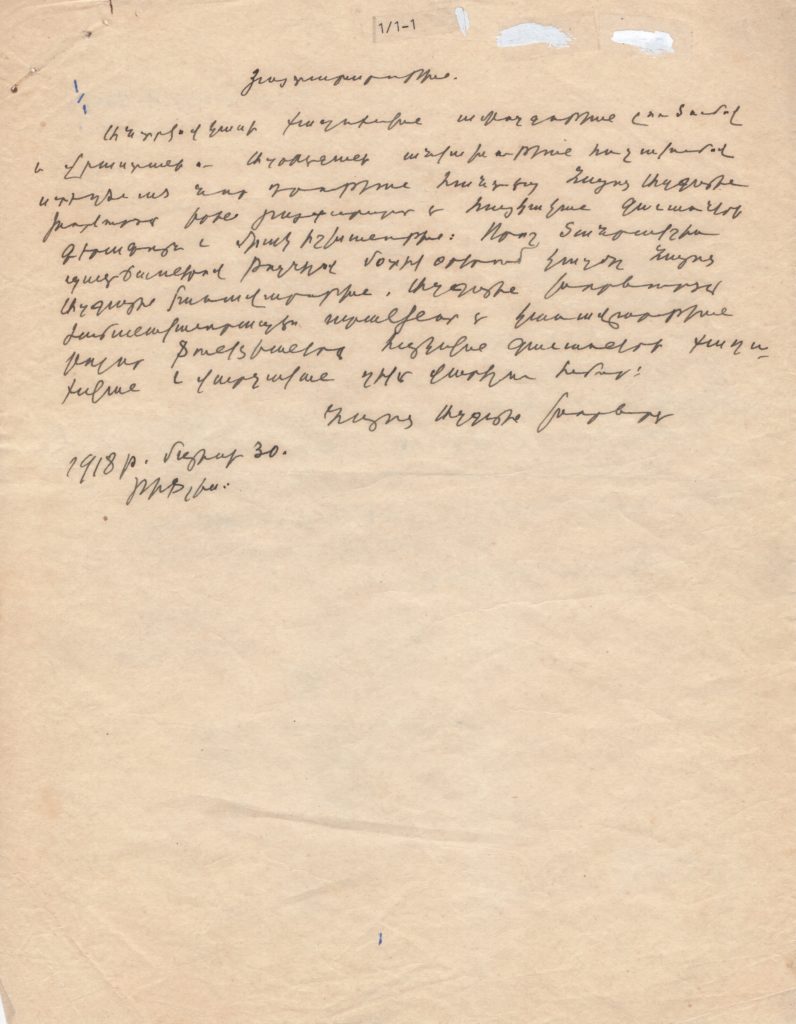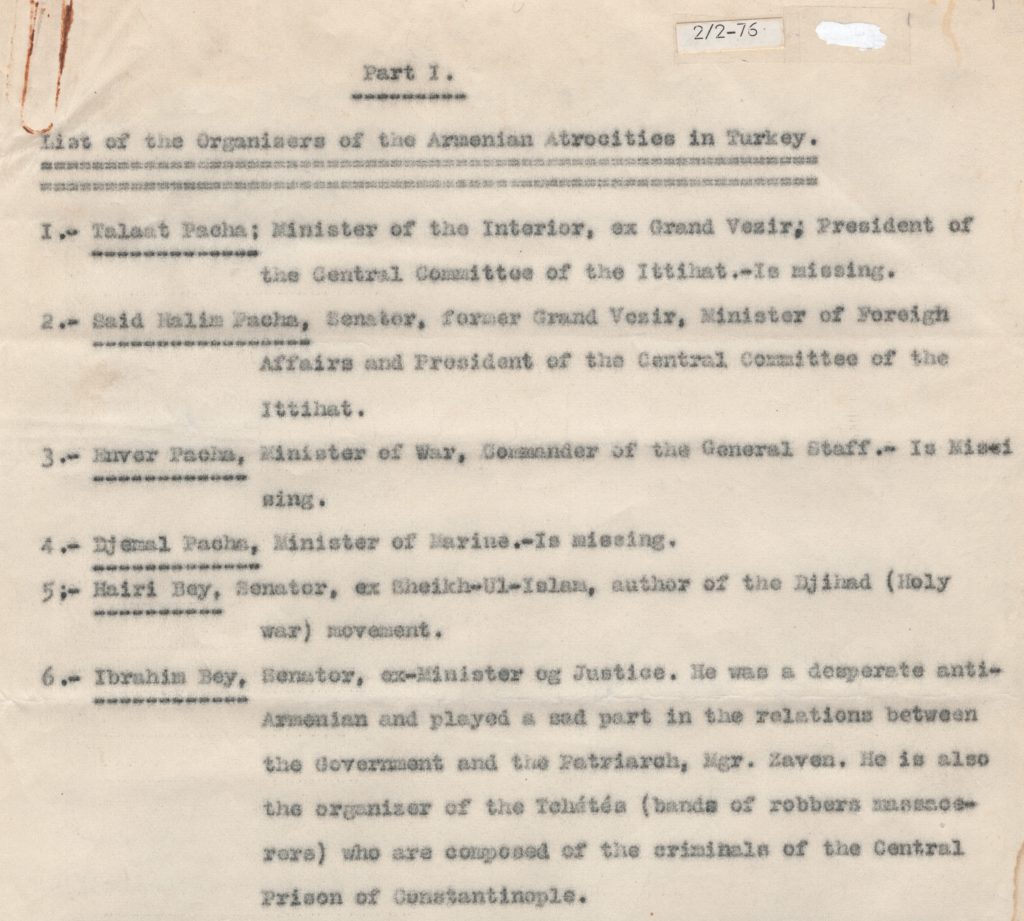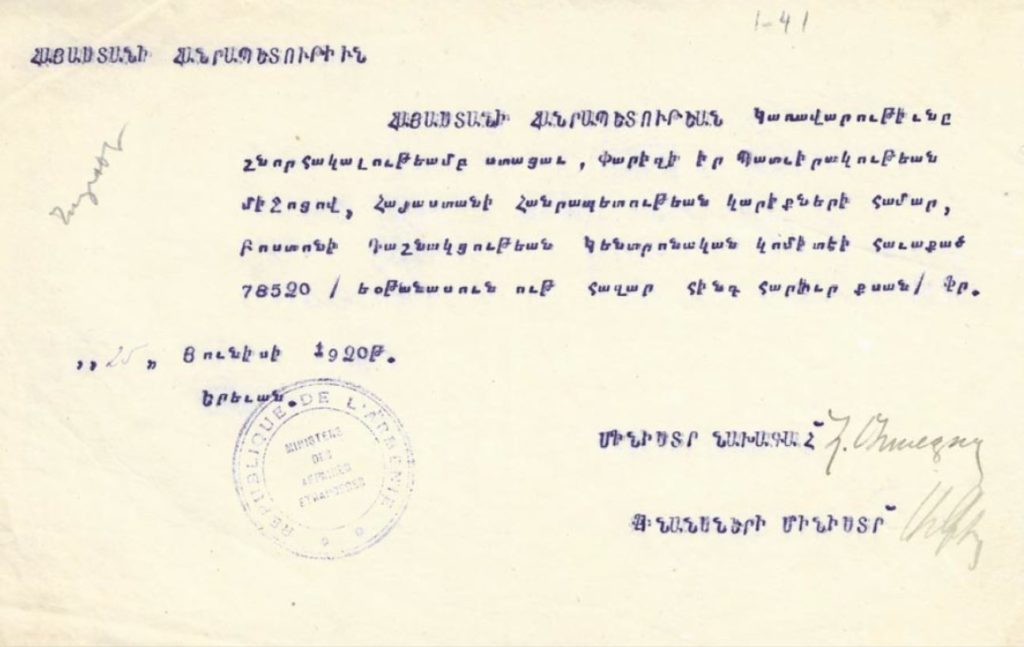From the Armenian Weekly 2018 Magazine Dedicated to the Centennial of the First Republic of Armenia

This special magazine issue of the Hairenik newspapers is dedicated to the 100th anniversary of the First Armenian Republic (1918-1920). Other contributors to this issue will supply fascinating details, commentary, and context regarding the legacy of the Republic. Here, I wish only to broadly comment on some of the circumstances under which the government of the Republic functioned, as indicated by documents in the archives located in the Hairenik building.
Independent Armenia was declared during one of the most desperate times in Armenian history, via a simple statement issued in Tiflis (Tbilisi) by a representative body: “The Armenian National Council declares itself the supreme and sole administration of the Armenian provinces.”
Having been left to its own devices by both Georgia and Azerbaijan, and with the complete annihilation of Armenians barely forestalled by the victories of Armenian military and volunteer forces against the Turkish army at the battles of Sardarabad, Bash-Abaran, and Gharakilisa, Armenia was compelled to accede to the harsh provisions of the Treaty of Batum with Turkey.

Vaspurakan” (L to R) Mesrop of Maku, Haroutiun, Aram Manoukian, Ishkhan, and Sogho of Akhaltskha (Photo: ARF Archives)
The birth of the First Republic was marked by an immense refugee crisis stemming from the Armenian Genocide, with the remnants of the massacred populations of Turkish (Western) Armenia having found refuge in Russian (Eastern) Armenia.
The government of the First Republic, though preoccupied with ameliorating the harsh conditions confronting the population, was not consumed solely with humanitarian concerns. Many early documents in the archives also contain survivor testimony and criminal complaints against the perpetrators of the Genocide. Of course, that process was not merely a documentation of past crimes but also of the ongoing victimization of the Armenian people.

The Republic faced insurmountable financial challenges, as well. Money was needed both to feed the population and to acquire weaponry to protect it. Accordingly, there are numerous reports on Armenia’s resources (military, mineral, water, agriculture, etc.), as well as the demographic composition and socioeconomic condition of the population.
The hopes, aspirations, and desperation related to the negotiations at the post-World War I Paris Peace Conference are palpable in the correspondence, meeting minutes, and the diaries of key actors. The government of the First Republic played a role in the issues and aspirations of Western Armenians, viewing those concerns as integral to the survival of the Republic itself.
Moreover, references to the ongoing disputes regarding Nakhichevan, Zangezur, and Artsakh (Karabagh), as well as threats confronting their indigenous Armenian populations, can also be found in these documents.

Viewing those documents in their totality, one clearly understands how the leading figures and statesmen of the Republic considered themselves a government for all Armenians.

One cannot but hold immeasurable respect for those who formed a functioning government under unimaginably difficult conditions in 1918. Though facing significant challenges today, the current independent Armenian Republic (1991) has, in comparison, significant advantages unavailable during the dark days of the First Republic.
Still, appropriately recognizing, honoring, and emulating the legacy of the First Republic would afford today’s Armenia an invaluable opportunity to further consolidate its own independence, placing it on a more democratic and secure footing.


Very important that we all better understand what happened as the first Republic was established. It appears that tHe Karabakh issue was very much alive 100 years ago….how did it get swallowed up into Azerbaijan?
In the article above, do you have a copy of the entire document listing the organizers of the Armenian Genocode? I would like to write an article on this issue.
Thanks